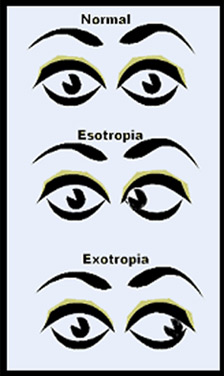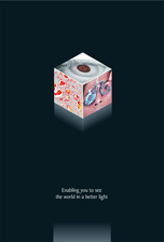FAQ - CATARACT
What is cataract ?
- Cataract is clouding of lens in the eye because of which vision gets affected. It may occur in either or both eyes , one may advance faster than other. It cannot be spread from one eye to other or one person to other
Who is at risk for cataracts ?
The risk of cataract increases as you get older Other risk factor may be- Certain disease(for e.g. diabetes)
- Personal behavior(smoking, alcohol use)
- The enviourment (exposure to uv sunlight)
- Over use of some drugs (steroids)
What are the symptoms of cataract ?
The most common symptoms are- Cloudy or blurry vision
- Colours seems faded
- Glare, headlights, lamps or sunlight may appear too bright. A halo may appear around light
- Poor night vision
- Double vision or multiple images in one eye
- Frequent prescription changes in your eyeglasses or contact lenses
These all can be sigs and symptoms of other eye problems as well , your eye care professional can only diagnose exact causes
How can cataract be diagnosed ?
Cataract can be detected with comprehensive eye examination like
- Visual acuity check up
- Refraction (check up of your glass numbers)
- Dilated eye examination
I have a cataract, but doctor wants to wait a while before removing it. Why?
- A cataract usually starts very small and practically unnoticeable but grows gradually larger and cloudier. Your doctor is probably waiting until the cataract interferes significantly with your vision and your lifestyle.
- You need to continue to visit your eye doctor regularly so the cataract's progress is monitored. Some cataracts never really reach the stage where they should be removed.
- Dilated eye examination
- If your cataract is interfering with your vision to the point where it is unsafe to drive, or doing everyday tasks is difficult, then it's time to discuss surgery with your doctor.
FAQ - SQUINT
What is Squint?
- Squint is a misalignment of the two eyes where in two eyes are not looking in the same direction. This misalignment may be constant, or it may appear sometimes and the rest of the time the eyes may be straight called as intermittent squint

I had an operation for a squint as a child, but now again my eyes appear squinting. Is it possible to operate again
- It is not uncommon for a squint that has been corrected in childhood to re-appear in adulthood. Yes, further surgery is often possible after assement by squint specialist
I have squint (eyes turn out) can it be treated ?
- Squints are treatable cosmetically , but you first need to be evaluated by squint specialist to understand whether can it be done in your case
What are the possible problems child has to face with squint ?
- When the eyes are not aligned properly, each of the eyes is focusing on a different object and sends signal to the brain. These two different images reaching the brain lead to various problems, it can cause loss of depth perception (3D vision) and lazy Eye Disease (poor development of vision in the squinting eye)
What are the symptoms of squint ?
- In a child, the parents may notice the deviation of eyes. squint in any child who is more than one month old must be taken seriously and should be evaluated by an ophthalmologist. Adults may notice double vision, or misalignment of the eyes.
How to diagnose squint
- The squint is diagnosed by the ophthalmologist. He or she would do a few special tests to confirm the presence of squint, and find out the type of the squint. In some cases there may be a false appearance of squint due to broad nasal bridge in a child. This is called as pseudo squint.
Why to do squint surgery?
The aim to do squint treatment is- To preserve and restore vision
- Straighten the eyes
- Restore 3D vision

What are the treatment options
The aim to do squint treatment is- Glasses
- Patching
- surgery
Eye Bank
Gokhale Eye Hospital and Eye Bank Tel : 022-24221820Parel eye bank: 022-24162929
MUMBAI HOTLINE FOR EYE DONATION IS 1919.
News & Events
Tips To Protect Young EyesParents should take extra care in selecting toys for young children and supervising their play during the holidays, according to a leading eye surgeon.
Seasonal Disease
Allergic conjunctivitis or spring catarrh is a very common seasonal disorder in children between 5 - 15 years of age. The disorder can only be suppressed. Cure cannot be offered.Download Brochure








